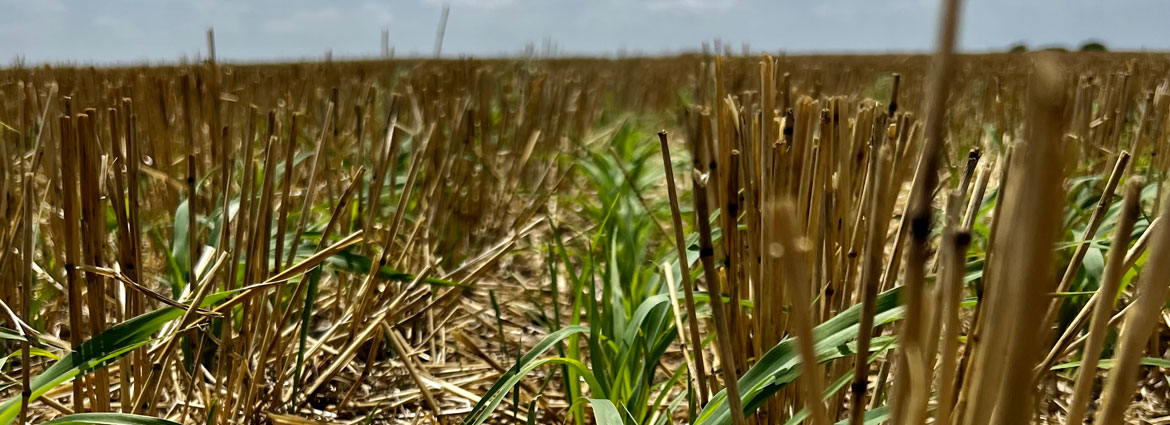
Forage Millet post Wheat Harvest
Forage millet is a warm season grass that is drought tolerant. Some advantages are better digestibility and good protein for animals. Another advantage for grazing or haying is that it has no prussic acid. We wanted to test forage millet in tough conditions.
Immediately after wheat harvest, we did a chemical burndown (eliminating any weed competition). We also included 30 pounds of liquid fertilizer. We then put the drought tolerant crop to the test, drilling in twelve pounds of millet seed per acre on 10-inch rows. Usually, the soil is super dry this time of year accompanied by high temperatures. This year was no different, as we had very little moisture in the top 1 inch of soil. To my amazement, the millet was up and visible in 5-7 days (see photo above).
However, the dog days of summer were also upon us. We went thru an extensive stretch of 100-degree days without any rain. The millet slowly, and I do mean slowly, grew to around 3-4 inches. By the time August 1st rolled around, I decided I had picked the perfect year to test millet. Spring crops were burning up and pastures looked ragged. The millet was no different, with the crop turning yellowish and leaves turning in similar drought stricken sorghum. When things were starting to look bleak, we caught 1 inch of rain. The millet greened up and made a push. Within 7-10 days most of the millet was 12-18 inches tall. This gave me some optimism. However, it was short lived, with dry conditions and heat dominating most of the month (August Monthly Total Rainfall: 0.36).
The end result was 56 bales weighing approximately 1,200 lbs per bale. In total, 1,460 lbs. per acre. I did a protein test on the hay and was disappointed. The crude dry protein was 6%. The relative feed value (RFV) was 80%. One positive was the nitrate values were very low at 53 mg/kg NO3-N. As such this feed would be consider utility or fair.
In conclusion, we learned that raising millet post-harvest is possible. However, under drought conditions do not expect quality hay. It would be interesting to repeat this test with more normalized rainfall.